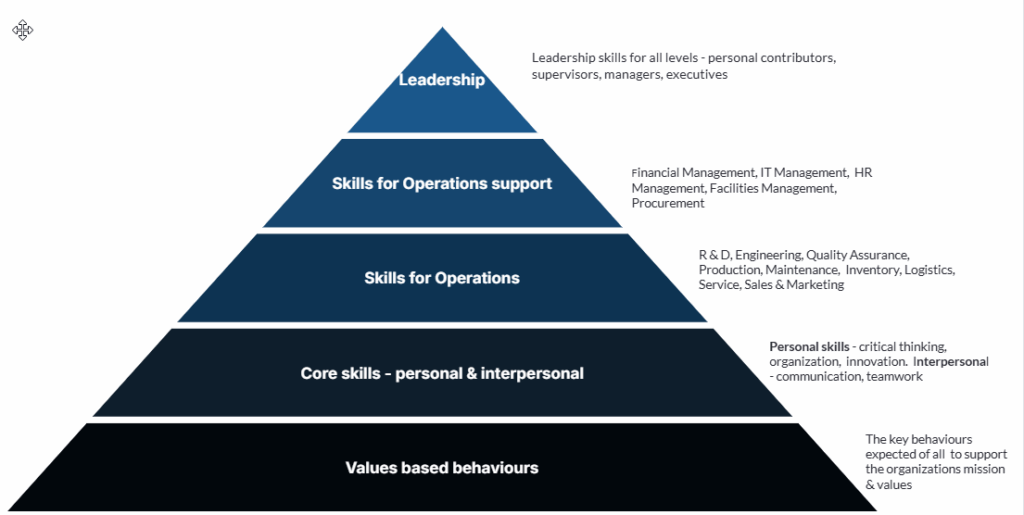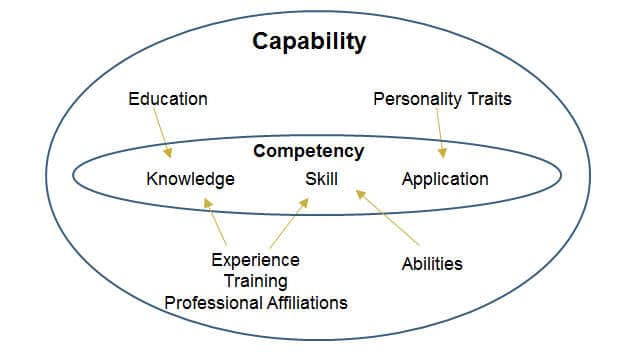A skills-based organization moves beyond rigid job structures to focus on what people can actually do — and how that capability supports strategic goals. Instead of managing static roles, it manages a dynamic ecosystem of skills, competencies, and experience that can be redeployed wherever value is created. This page explains what a skills-based organization really means in practice: the data foundations, governance, and culture shifts required to make skills the common language across talent, learning, and performance. It also shows how connecting skills to measurable capability gives leaders clearer insight into workforce readiness and agility.

What a Skills-Based Organization Really Means
A skills-based organization focuses on what people can do, not just the jobs they hold. It treats skills and competencies as dynamic assets that can be combined in different ways to meet business priorities. Instead of managing employees through fixed job descriptions, it manages a portfolio of capabilities that can shift as needs evolve.
This approach replaces hierarchical, role-driven structures with networks of skills, enabling faster redeployment and better visibility of workforce strengths. It also breaks down silos between HR functions — recruitment, learning, performance — by giving them a common skills language.
When implemented properly, a skills-based model creates flexibility without losing accountability. Roles still exist, but they become containers for verified skills and demonstrated competencies. This balance allows organizations to remain agile while retaining the structure necessary for compliance and quality control.
Why the Shift Is Happening
The move toward skills-based organizations is driven by rapid technological change, talent shortages, and the need for agility. Traditional job frameworks cannot keep pace with emerging roles that combine digital, analytical, and interpersonal competencies in new ways.
Research by the World Economic Forum and Deloitte shows that organizations mapping skills at scale can redeploy staff up to four times faster than those using conventional job models. For industries facing disruption — from automation to regulation — a skills-based structure offers visibility of the capabilities already available and those that must be developed.
This shift is also cultural. Employees expect transparency in how their skills are valued and opportunities to apply them beyond formal job titles. When leaders recognise and reward verified skills, engagement rises and talent mobility increases, strengthening both workforce resilience and organizational capability.
Foundations of a Skills-Based Organization
A successful skills-based organization depends on accurate, integrated data. The foundation is a skills and competency taxonomy — a structured library linking knowledge, skills, and behaviours to each area of work. This taxonomy must be mapped to roles, performance expectations, and learning resources.
Technology alone is not enough. Governance frameworks are needed to standardize skill definitions, proficiency levels, and verification processes across business units. Clear ownership ensures that the taxonomy remains current as new technologies and regulatory requirements emerge.
Analytics and AI can then be used to infer or validate skills from existing records — training completions, project histories, or assessment results. The goal is a single, coherent view of the organization’s capability: one that connects people data to strategic workforce planning, compliance, and development decisions.

Governance and Change Management
Moving to a skills-based model requires both policy and cultural change. Governance defines who maintains the skills data, how proficiency is verified, and how it links to performance, reward, and mobility decisions. Without clear rules, skill tagging and AI-based inference quickly become unreliable.
Change management focuses on communication and trust. Staff need to understand how their information will be used and how it benefits them — for example, identifying development opportunities, not just managing redeployment. Leaders must champion transparency and ensure that skill data is used ethically and fairly.
An effective governance structure includes periodic audits of the skills framework, calibration of proficiency ratings, and cross-functional committees to review updates. This ensures consistency and alignment with the organization’s strategic objectives.

From Skills to Capability
A skills-based organization achieves its real value when skills and competencies are integrated into measurable capability. Capability represents the outcome of skills applied effectively — the ability to perform roles, deliver results, and maintain compliance.
By linking verified skills to the broader dimensions of capability — qualifications, experience, and professional attributes — organizations gain a complete picture of workforce readiness. This allows them to identify risks, target learning investment, and forecast future needs.
Skills are the building blocks, but capability is the structure they create. When managed together, they provide the evidence required for strategic planning, regulatory reporting, and continuous improvement — ensuring that agility does not come at the expense of assurance.
Becoming a skills-based organization is not a technology project — it’s a cultural shift toward transparency, mobility, and evidence-based capability. By linking skills and competencies to measurable business outcomes, you create an agile structure that adapts as work evolves.
Next steps
-
- Read Building a Skills-Based Workforce – turn strategy into day-to-day practice.
- AI in Competency Management -for insight into what can be automated and what to validate.
- Visit the Capability & Competency Resources Hub for guides and examples.
- Explore Workforce Capability & Competency Management – integrating data and governance at scale.
FAQ
What is a skills-based organization?
It manages people by their skills and competencies as well as job titles, enabling agility and capability growth.
How is it different from a skills-based workforce?
The organization model defines strategy and governance; the workforce view focuses on day-to-day implementation and data use.
What foundations are needed?
A unified skills and competency taxonomy, clear governance, integrated systems and leadership support for mobility.
How does it build capability?
By connecting verified skills and competencies to business outcomes, creating measurable organizational capability.

